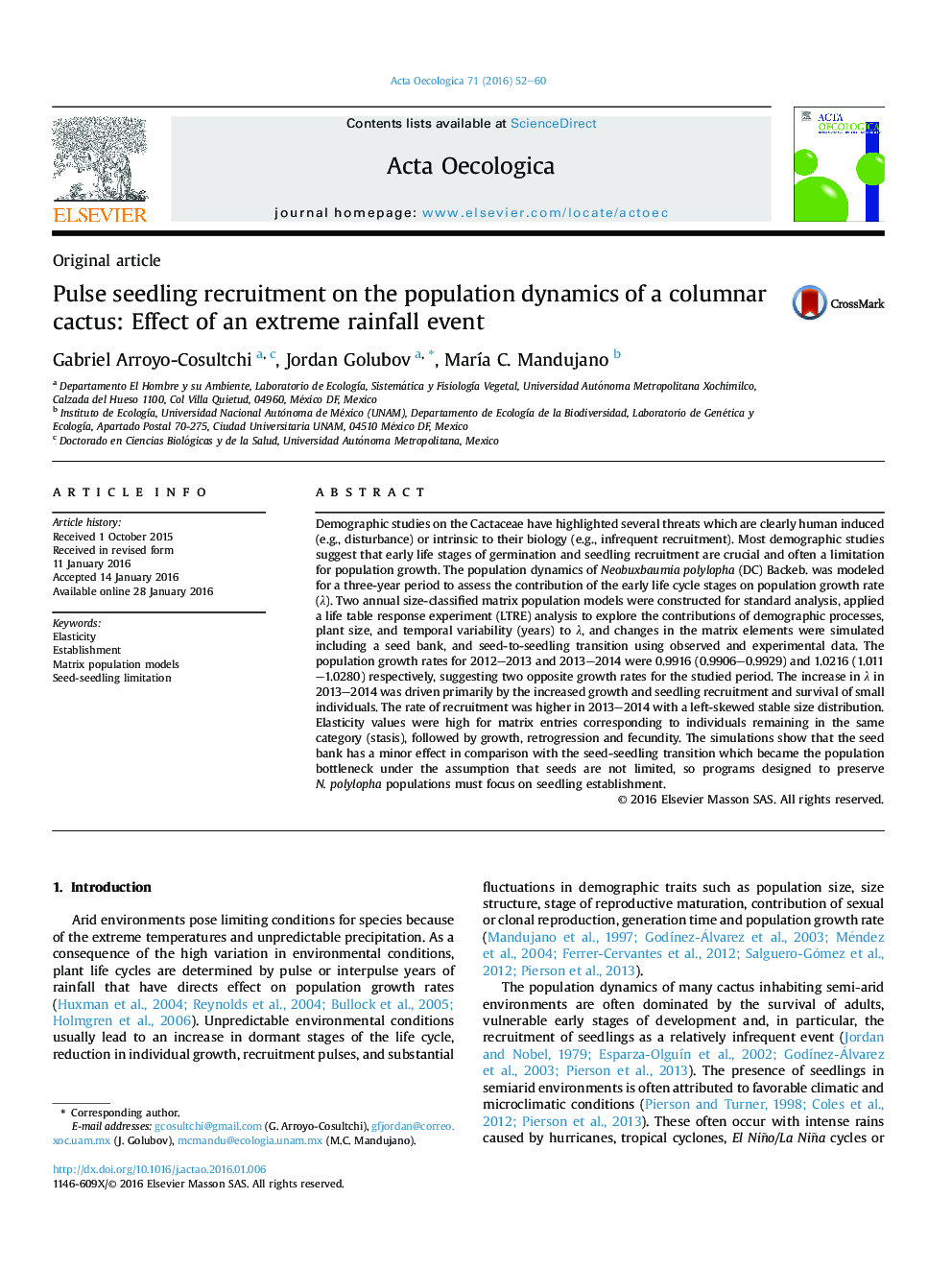| Article ID | Journal | Published Year | Pages | File Type |
|---|---|---|---|---|
| 4380735 | Acta Oecologica | 2016 | 9 Pages |
•Seedling recruitment relied on rainfall which affected population dynamics and the importance of demographic processes.•The experimental approach showed the demographic implications of natural and experimental seedling recruitment.•Contributions of the early stages of the life cycle are crucial in the population dynamics of Neobuxbaumia polylopha.
Demographic studies on the Cactaceae have highlighted several threats which are clearly human induced (e.g., disturbance) or intrinsic to their biology (e.g., infrequent recruitment). Most demographic studies suggest that early life stages of germination and seedling recruitment are crucial and often a limitation for population growth. The population dynamics of Neobuxbaumia polylopha (DC) Backeb. was modeled for a three-year period to assess the contribution of the early life cycle stages on population growth rate (λ). Two annual size-classified matrix population models were constructed for standard analysis, applied a life table response experiment (LTRE) analysis to explore the contributions of demographic processes, plant size, and temporal variability (years) to λ, and changes in the matrix elements were simulated including a seed bank, and seed-to-seedling transition using observed and experimental data. The population growth rates for 2012–2013 and 2013–2014 were 0.9916 (0.9906–0.9929) and 1.0216 (1.011–1.0280) respectively, suggesting two opposite growth rates for the studied period. The increase in λ in 2013–2014 was driven primarily by the increased growth and seedling recruitment and survival of small individuals. The rate of recruitment was higher in 2013–2014 with a left-skewed stable size distribution. Elasticity values were high for matrix entries corresponding to individuals remaining in the same category (stasis), followed by growth, retrogression and fecundity. The simulations show that the seed bank has a minor effect in comparison with the seed-seedling transition which became the population bottleneck under the assumption that seeds are not limited, so programs designed to preserve N. polylopha populations must focus on seedling establishment.
